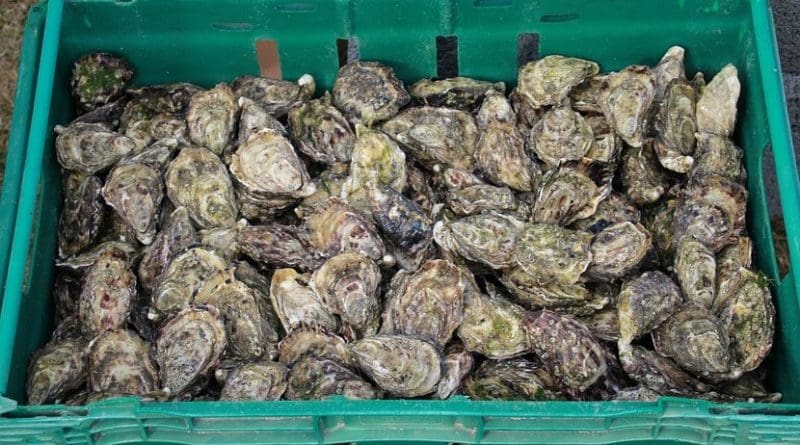Toxic Effects Of Oil Dispersant On Oysters Following Deepwater Horizon Spill
Oysters likely suffered toxic effects from the oil dispersant Corexit® 9500 when it was used to clean up the 2010 Deepwater Horizon oil spill, said Morris Animal Foundation-funded researchers at the University of Connecticut. The team determined this by comparing the low levels of toxicity of oil, the dispersant and a mixture of the two on Eastern oysters. The team published their findings in the journal Aquatic Toxicology.
After the Deepwater Horizon oil rig spilled more than 170 million gallons of oil into the Gulf of Mexico, nearly two million gallons of Corexit® 9500 was deployed into the Gulf to break the oil down.
“There’s an unfortunate trade-off to using dispersants like this,” said Lindsay Jasperse, a member of the university’s research team that published the study. “They may prevent giant oil spills from washing ashore and damaging wetlands, but they also cause negative effects for species below the ocean’s surface that might have been spared if dispersants weren’t used.”
Oysters are considered a keystone species due their value to their ecosystem. Primarily, they serve as water purifiers, filtering out particles and nutrients from the water to improve the quality for surrounding species. Oyster reefs also prevent erosion and provide habitat and protection for many crabs and fish. Unfortunately, as they are immobile and so abundant, they are at a significant risk for critical exposure to oil and oil dispersants following environmental disasters.
Researchers compared, in a controlled environment, the toxicity of oil alone, the dispersant alone and a mixture of the two on oysters. The researchers tested both the oysters’ feeding rates, or how well they could filter algae, and immune functions, or how well they could absorb and destroy bacteria, which indicates an oyster’s ability to fight off infection. A reduction in an oyster’s feeding rates could result in stunted growth or even death. If an oyster’s immune system is compromised, it can be more likely to succumb to infection.
For the oysters’ immune function, the dispersant alone was the most toxic, followed by the dispersant and oil mixture. Oil alone did not impact the oysters’ immune function at all. Researchers tested the oysters’ feeding rates and found the mixture of the dispersant and oil had the most toxic effect, followed by oil alone and then the dispersant alone.
“Knowing the effects dispersants and oil have on oysters can help us make better mitigation recommendations the next time an environmental and ecological crisis like this happens,” said Dr. Kelly Diehl, Morris Animal Foundation Interim Vice President of Scientific Programs. “Species are interconnected, and what harms oysters will likely cascade through their ecosystem to the detriment of all.”

